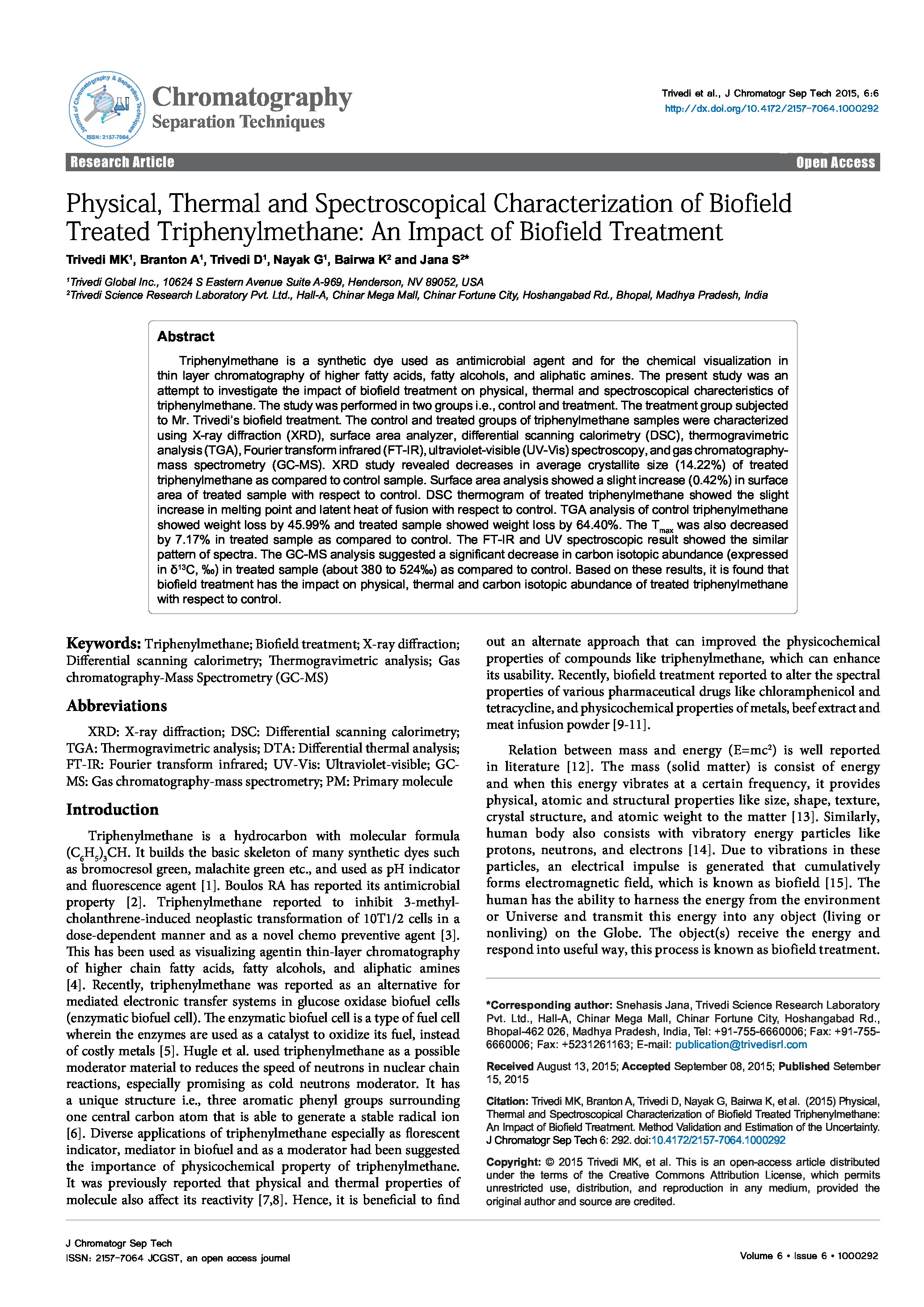Physical, Thermal and Spectroscopical Characterization of Biofield Treated Triphenylmethane: An Impact of Biofield Treatment
Affiliation
Trivedi Global Inc.; Trivedi Science Research Laboratory Pvt. Ltd.
Main category
Natural Sciences (Analytical Chemistry, Method Development (Chemistr)
Abstract
Triphenylmethane is a synthetic dye used as antimicrobial agent and for the chemical visualization in thin layer chromatography of higher fatty acids, fatty alcohols, and aliphatic amines. The present study was an attempt to investigate the impact of biofield treatment on physical, thermal and spectroscopical charecteristics of triphenylmethane. The study was performed in two groups i.e., control and treatment. The treatment group subjected to Mr. Trivedi’s biofield treatment. The control and treated groups of triphenylmethane samples were characterized using X-ray diffraction (XRD), surface area analyzer, differential scanning calorimetry (DSC), thermogravimetric analysis (TGA), Fourier transform infrared (FT-IR), ultraviolet-visible (UV-Vis) spectroscopy, and gas chromatography-mass spectrometry (GC-MS). XRD study revealed decreases in average crystallite size (14.22%) of treated triphenylmethane as compared to control sample. Surface area analysis showed a slight increase (0.42%) in surface area of treated sample with respect to control. DSC thermogram of treated triphenylmethane showed the slight increase in melting point and latent heat of fusion with respect to control. TGA analysis of control triphenylmethane showed weight loss by 45.99% and treated sample showed weight loss by 64.40%. The Tmax was also decreased by 7.17% in treated sample as compared to control. The FT-IR and UV spectroscopic result showed the similar pattern of spectra. The GC-MS analysis suggested a significant decrease in carbon isotopic abundance (expressed in δ13C, ‰) in treated sample (about 380 to 524‰) as compared to control. Based on these results, it is found that biofield treatment has the impact on physical, thermal and carbon isotopic abundance of treated triphenylmethane with respect to control.
DOI
10.18147/smn.2016/paper:356
Do you have problems viewing the pdf-file? Download paper
here
If the paper contains inappropriate content, please
report the paper. You will be redirected to the landing page.
